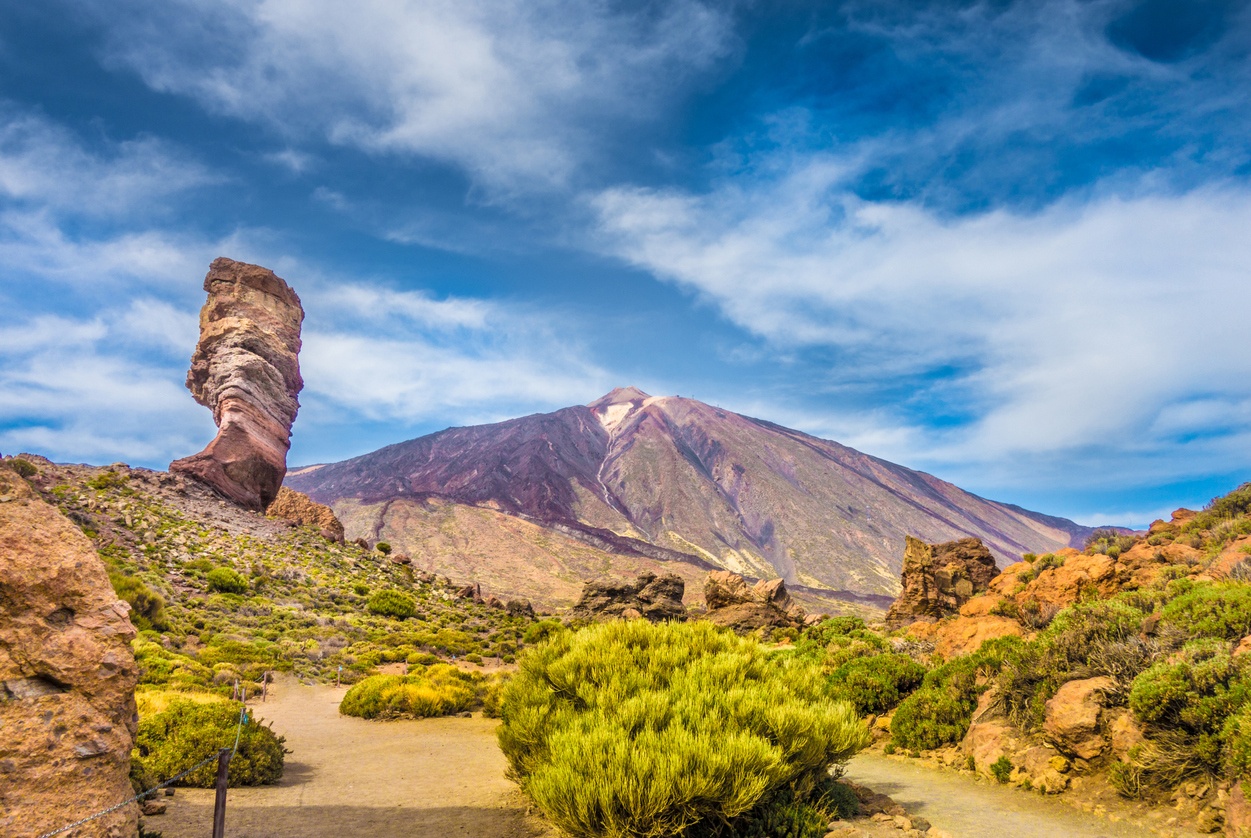
Cañadas del Teide National Park (Spain)
The Cañadas del Teide National Park is a protected natural area located on the island of Tenerife, Canary Islands. It is the oldest and largest national park in the islands and the third largest in Spain. It was declared a World Heritage Site by UNESCO in 2007. The park is home to the Teide volcano, the highest peak in Spain and the Atlantic, and Pico Viejo, the second highest in the Canary Islands. The park is characterized by its volcanic landscapes, its endemic biodiversity, and its historical and cultural value to the ancient Guanche people. The park is also a place of scientific interest because of its geological and climatic conditions.
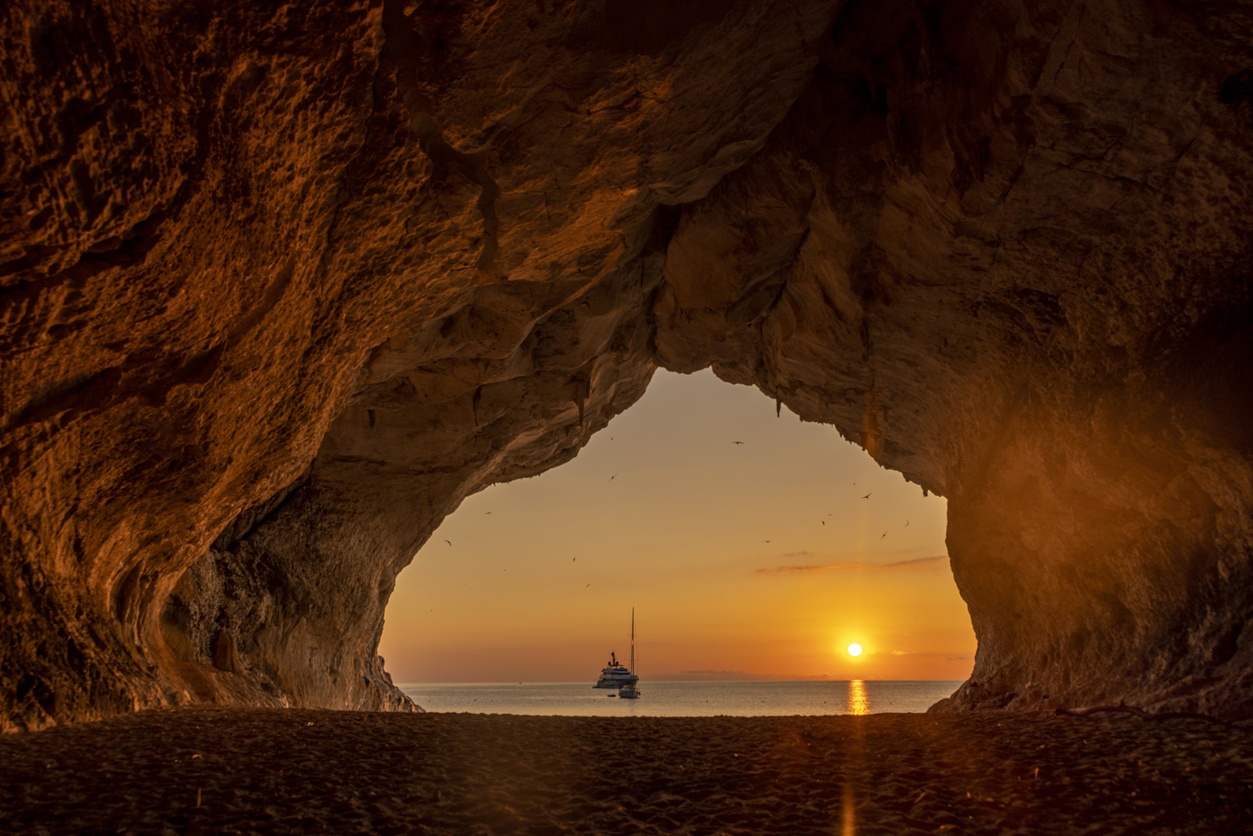
Golfo de Orosei (Italy)
The Gulf of Orosei is a small gulf located on the east coast of Sardinia, in the Tyrrhenian Sea. It is one of the most spectacular places of the island for its natural landscapes and its paradisiacal beaches. The gulf is home to several coves of white sand and crystal clear waters, surrounded by cliffs and Mediterranean vegetation. Some of the most famous are Cala Luna, Cala Goloritzé, Cala Mariolu and Cala Sisine. To access these coves you can take a boat trip from the port of Cala Gonone or walk along trails that cross the Supramonte, a mountainous area of great ecological and cultural value. The gulf also offers other activities such as diving, climbing, kayaking or hiking.
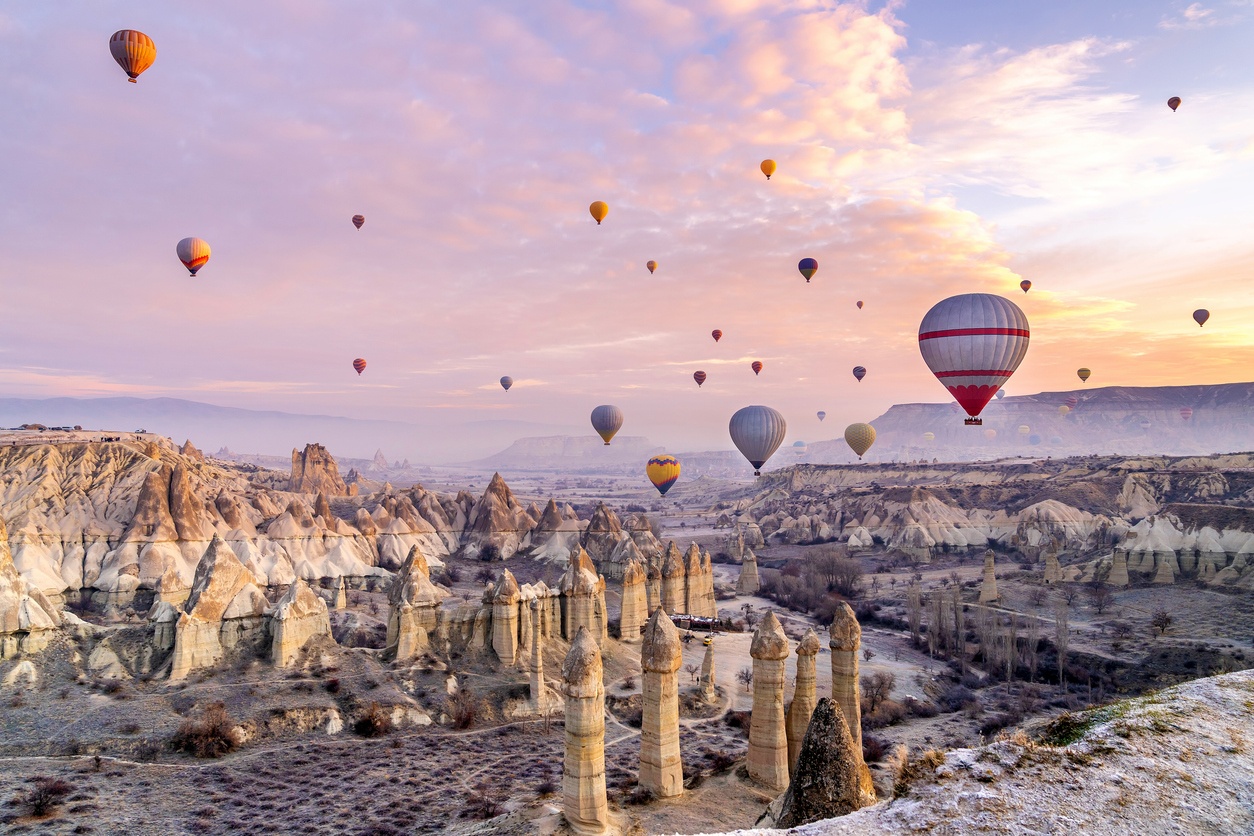
Göreme, Cappadocia (Turkey)
Göreme is a town and national park located in the Cappadocia region of central Turkey. It is famous for its landscapes of rock formations of volcanic origin, which have eroded creating fairy chimneys and caves. Numerous Christian churches and monasteries have been excavated in these caves from the 3rd to the 13th century, decorated with frescoes of great artistic and historical value. The national park of Göreme and the cave sites of Cappadocia were declared a UNESCO World Heritage Site in 1985. One of the most popular activities in Göreme is hot air ballooning, which offers spectacular views of the landscape.
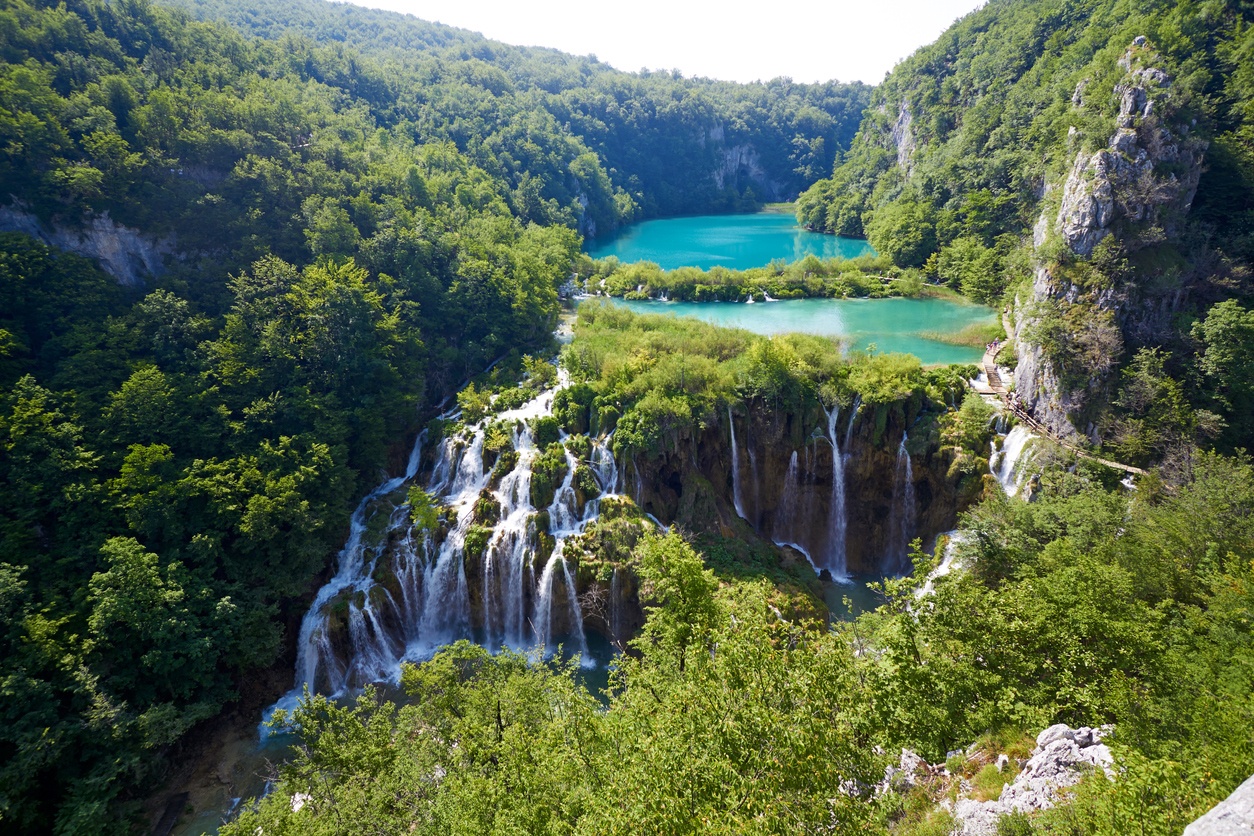
Plitvice Lakes (Croatia)
The Plitvice Lakes are a group of 16 lakes of karst origin located in the center of Croatia. They are part of the oldest and largest national park in the country, declared a World Heritage Site by UNESCO in 1979. The lakes are connected by waterfalls and waterfalls that create a unique natural spectacle. The park has a great diversity of flora and fauna, with beech, fir and pine forests, and species such as the brown bear, wolf and lynx. The park offers seven tourist routes to tour the lakes on foot, by boat or by electric train.
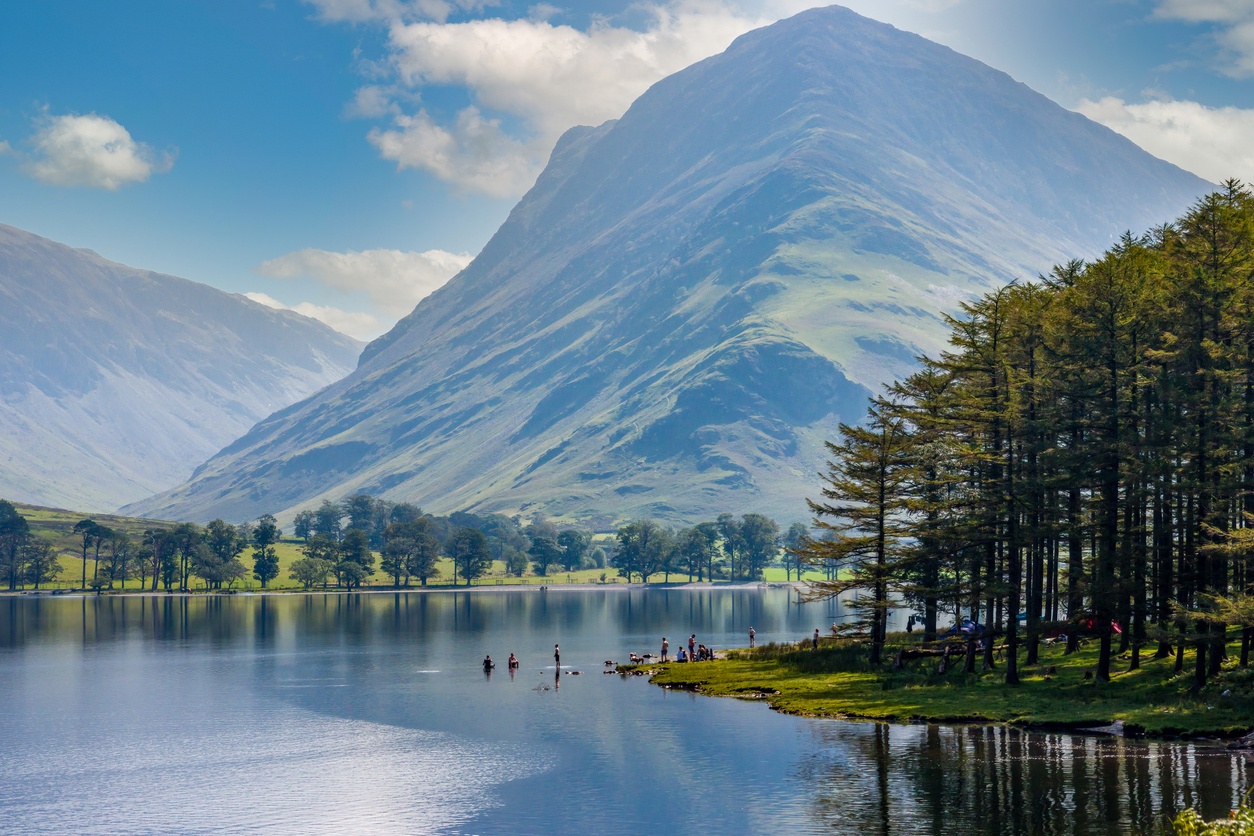
Lake District National Park (UK)
The Lake District National Park is a rural area in the northwest of England, famous for its lakes and mountains. It is the largest national park in England and one of the few mountainous regions in the country. It was declared a Unesco World Heritage Site in 2017 for its natural beauty and cultural value. The park is home to the largest lake (Windermere) and highest mountain (Scafell Pike) in England, as well as picturesque villages and farms. The park offers numerous outdoor activities, such as hiking, cycling, sailing and climbing. It is also known for having inspired poets and writers of the 19th century, such as William Wordsworth or Beatrix Potter.
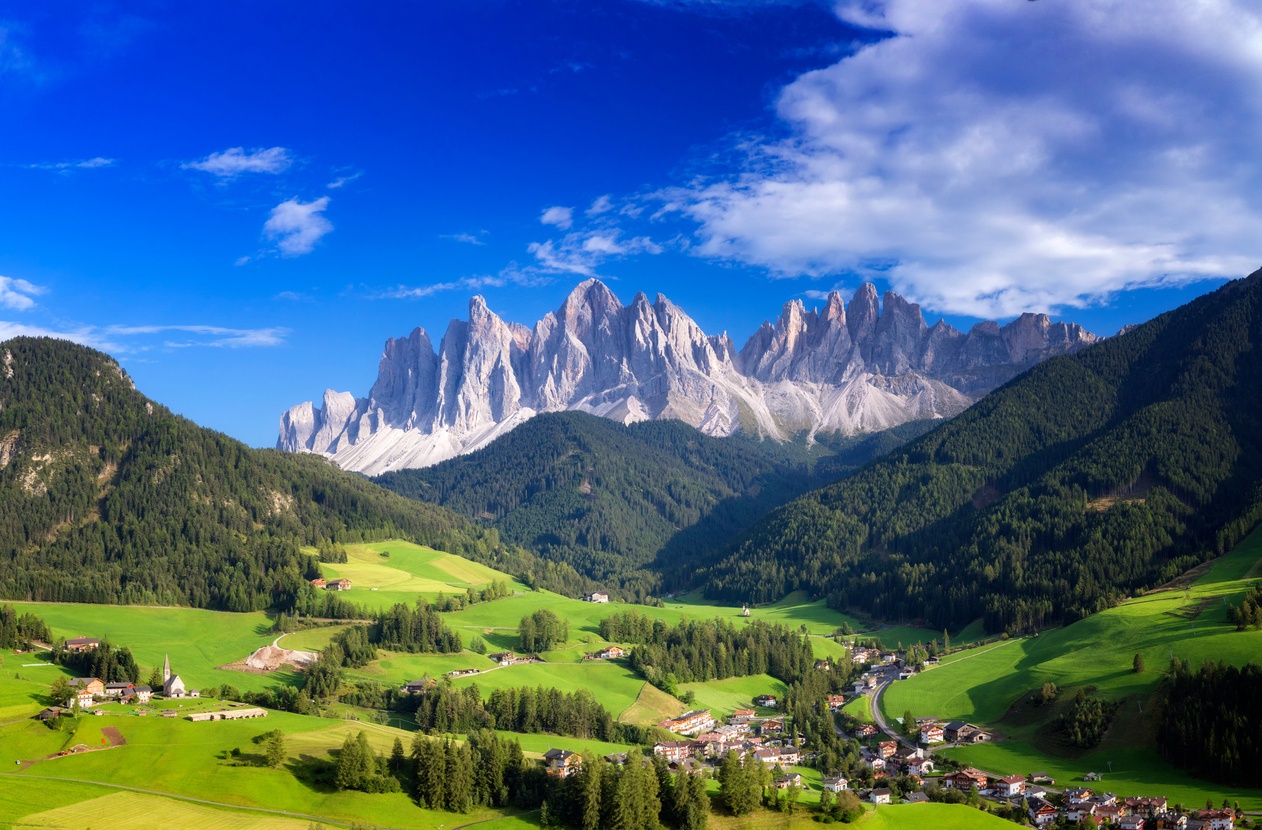
Dolomites (Italia)
The Dolomites National Park is a protected natural area located in northern Italy, in the Veneto region. The park covers part of the Dolomites mountain range, declared a World Heritage Site by Unesco for its beauty and geological value. The park is characterized by landscapes of eroded limestone rocks, which form peaks, towers and spires. The park is home to a great variety of flora and fauna, with beech, fir and pine forests, and species such as the golden eagle, capercaillie and chamois. The park offers numerous outdoor activities, such as hiking, cycling, climbing and skiing.
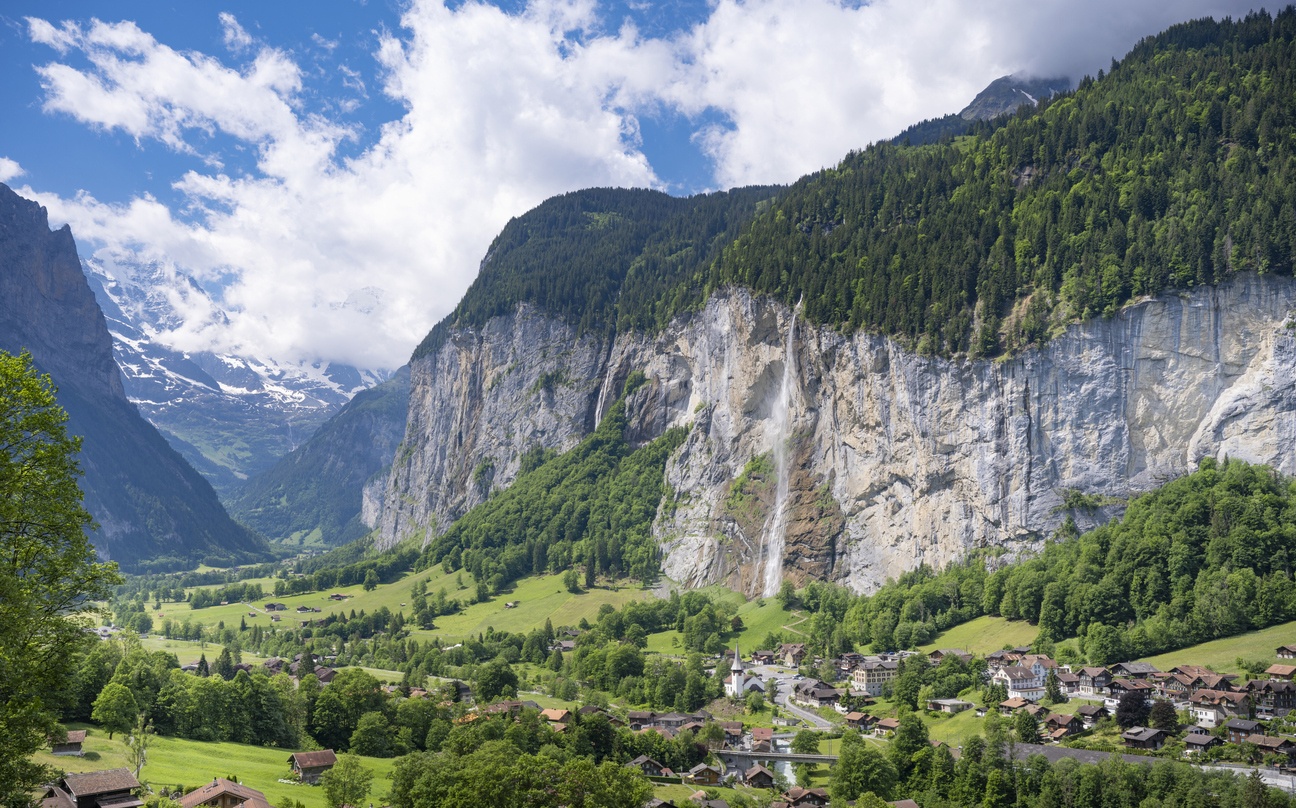
Lauterbrunnen (Suiza)
Lauterbrunnen is a Swiss village in the canton of Bern, located in the valley of the same name, surrounded by mountains and waterfalls. It is one of the most beautiful villages in Switzerland and a popular destination for nature lovers and winter sports enthusiasts. Lauterbrunnen means «many springs» and refers to the 72 waterfalls in the valley, including the Staubbachfall, which falls from a height of 300 meters. The village has a typical church and wooden houses with flowers. From Lauterbrunnen you can access other places of interest such as Mürren, Schilthorn, Trümmelbachfall or the Jungfraujoch, the highest point in Europe accessible by train.
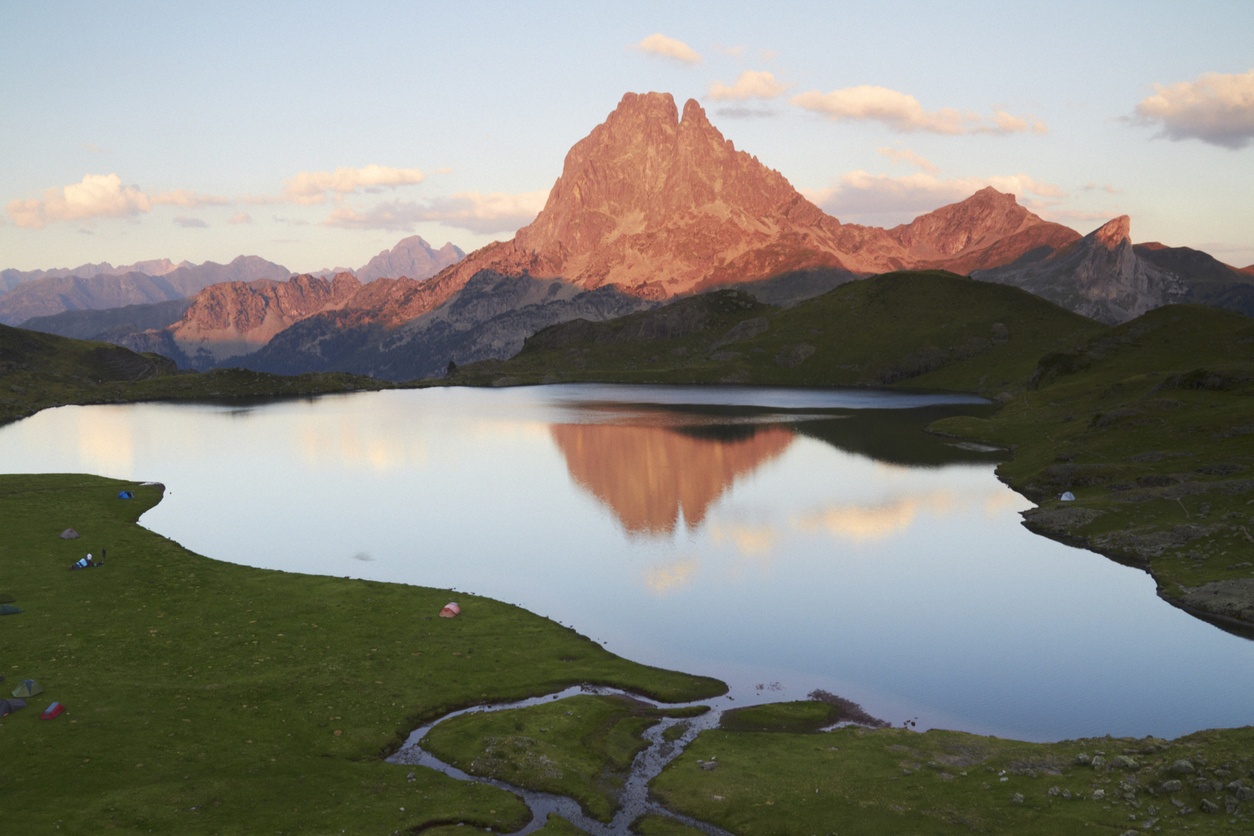
Midi d’Ossau (France)
Midi d’Ossau is a mountain in the French Pyrenees that rises to 2884 meters altitude. It is the remains of an ancient volcano that has eroded leaving a pyramidal and rocky shape. It is one of the most emblematic and popular peaks in the area, both for its beauty and for its climbing and hiking routes. It can be climbed by the normal route from the Pombie refuge and the Souzon pass, overcoming three chimneys of varying difficulty. It can also be rounded by a path that passes through the Ayous lakes, which offer spectacular views of the Midi d’Ossau. The mountain is located in the Pyrenees national park and is visible from El Portalet pass.
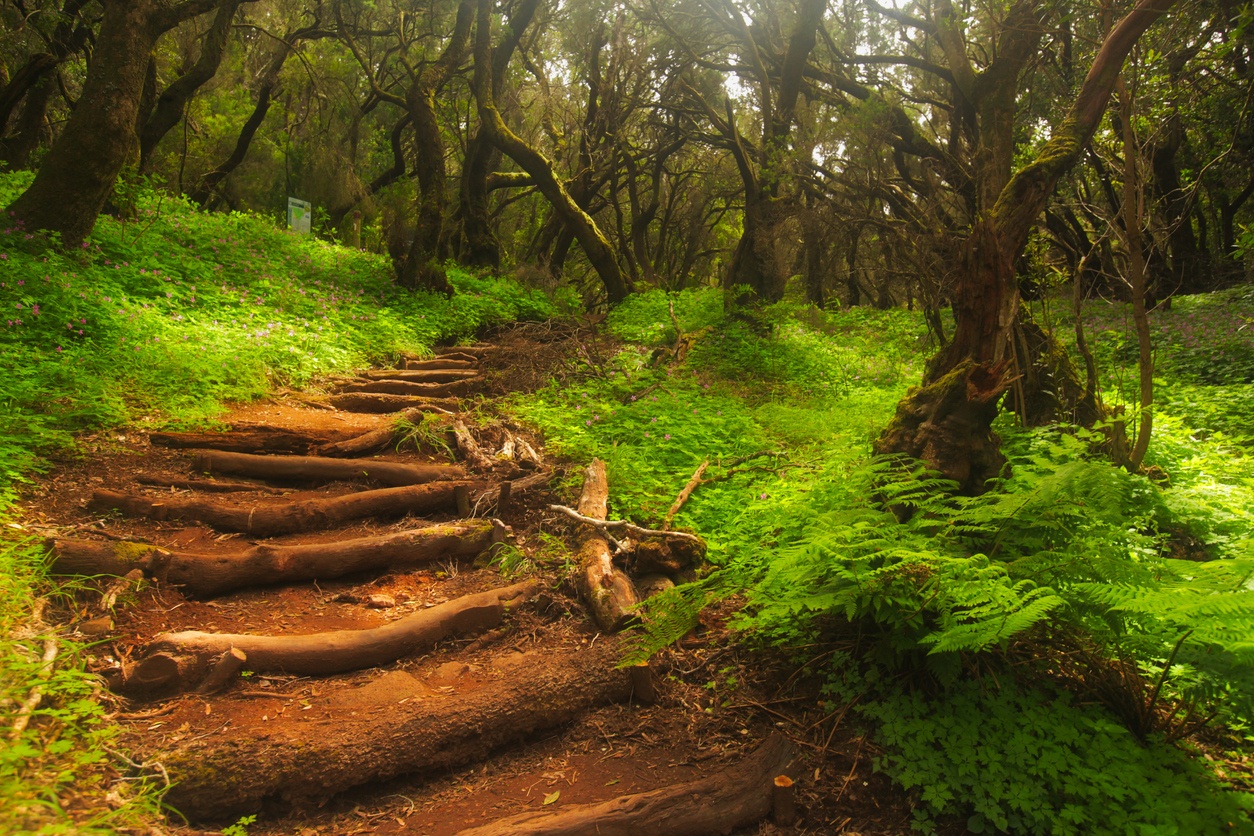
Garajonay National Park (Spain)
Garajonay National Park is a protected natural area located on the island of La Gomera, in the Canary Islands. It was declared a national park in 1981 and a UNESCO World Heritage Site in 1986. The park occupies more than 10% of the island’s surface and is home to the best example of laurel forest or monteverde, a type of subtropical rainforest that covered much of Europe in the Tertiary. The park has a great diversity of plant and animal species, many of them endemic. The park also has a cultural and historical value because of its relationship with the ancient inhabitants of the island, the Guanches. The park can be visited through different trails that allow you to enjoy its landscapes and natural wealth.
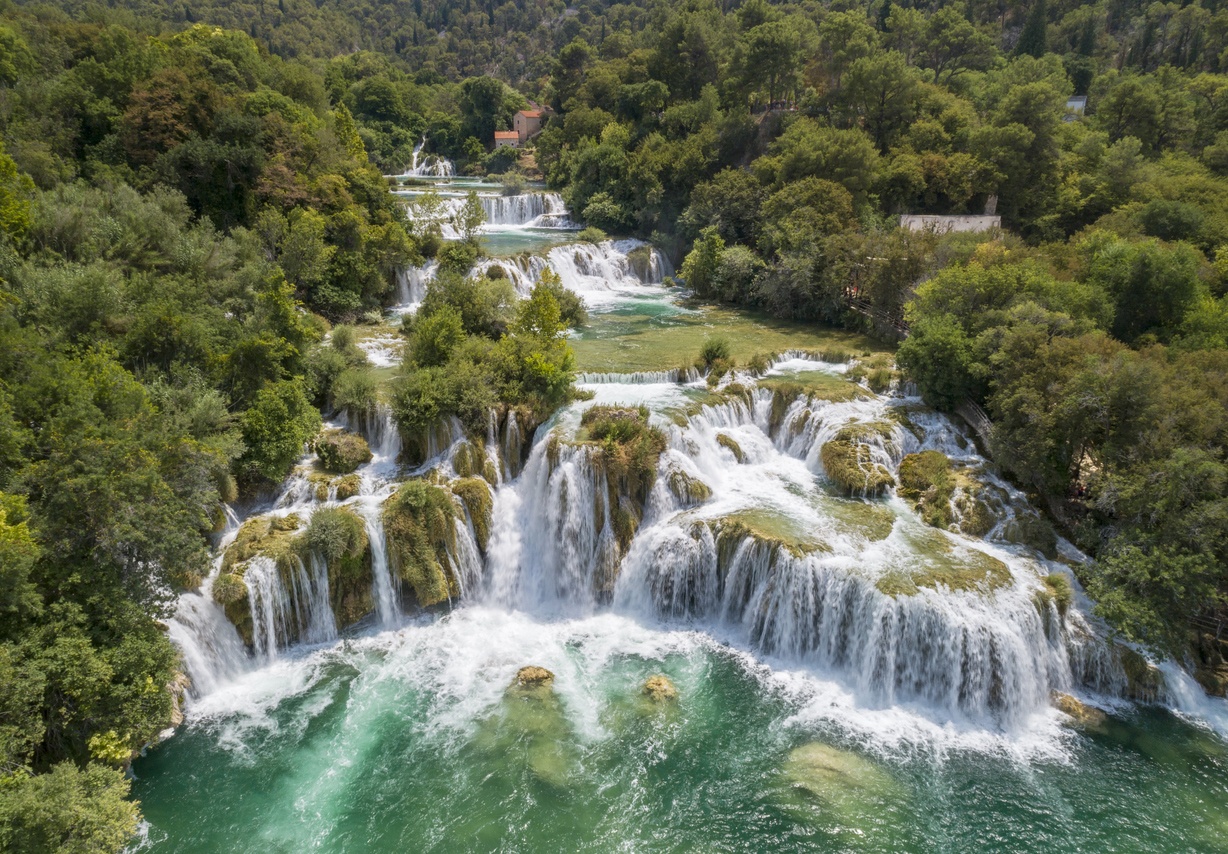
Krka National Park (Croatia)
Krka National Park is a magical place in Croatia, where you can admire the waterfalls and cascades of the Krka River, which runs 73 kilometers from the Adriatic coast to the interior of Dalmatia. The park was created in 1985 to preserve this natural environment, which is also home to a rich flora and fauna, as well as historical and cultural vestiges. To visit the park, you can access it from the town of Skradin, where you take a boat that leads to the walkways and trails that connect the different areas of the park. One of the most famous attractions is the Skradinski waterfall, where you can swim in summer. You can also visit the island of Visovac, where there is a Franciscan convent, or the Krka monastery, a spiritual center with Roman catacombs. Krka National Park is a must for nature and history lovers in Croatia.
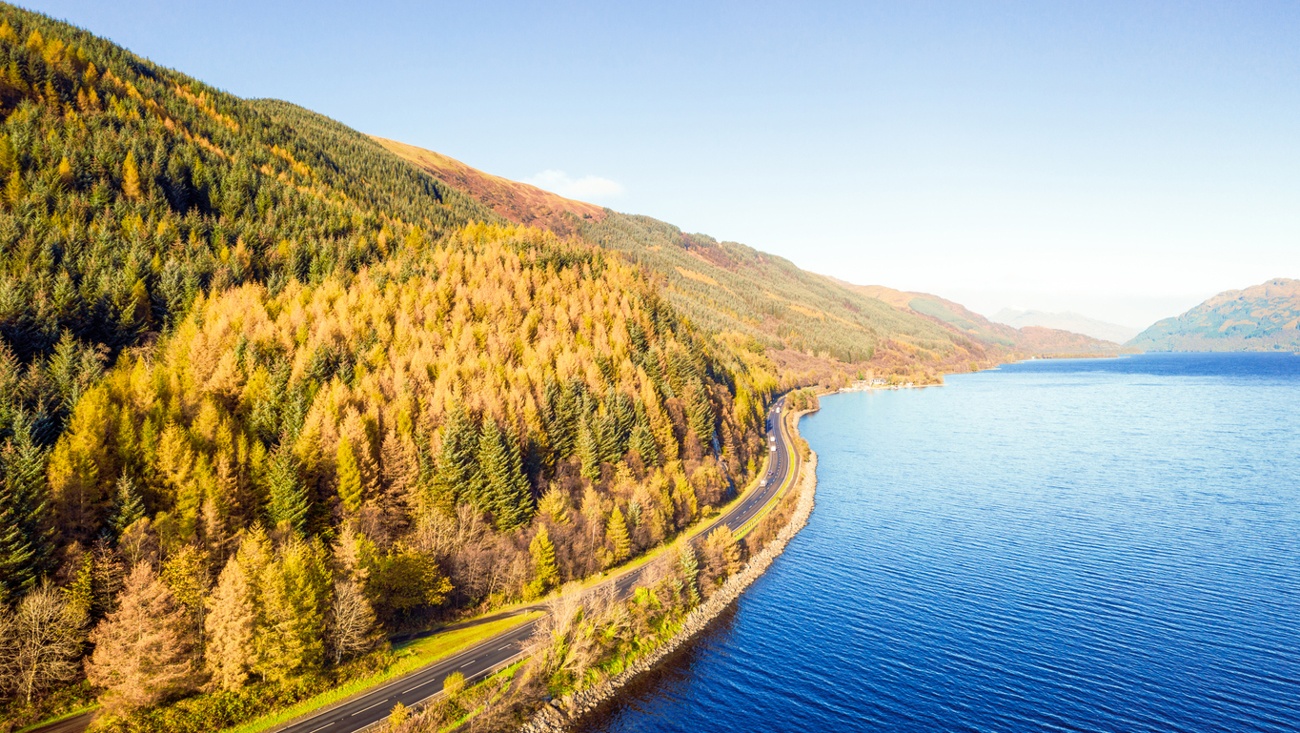
Parque Nacional Loch Lomond and the Trossachs (Escocia)
Loch Lomond and the Trossachs National Park is a national park in Scotland, covering an area of 1,865 km² with varied and spectacular scenery. The park was created in 2002 and was the first of Scotland’s two national parks. The park is centered around Loch Lomond, the largest freshwater loch in Britain, which is divided by the Highland Rift, separating the Highlands from the Lowlands. The park also includes several mountain ranges, such as the Trossachs, which are famous for their beauty and history linked to Rob Roy MacGregor. The park offers many activities and experiences for visitors, such as sailing on Loch Lomond, climbing the 21 munros in the park, visiting the island of Inchmahome with its ancient monastery or enjoying local food and produce. Loch Lomond and the Trossachs National Park is an ideal place for lovers of nature and Scottish culture.
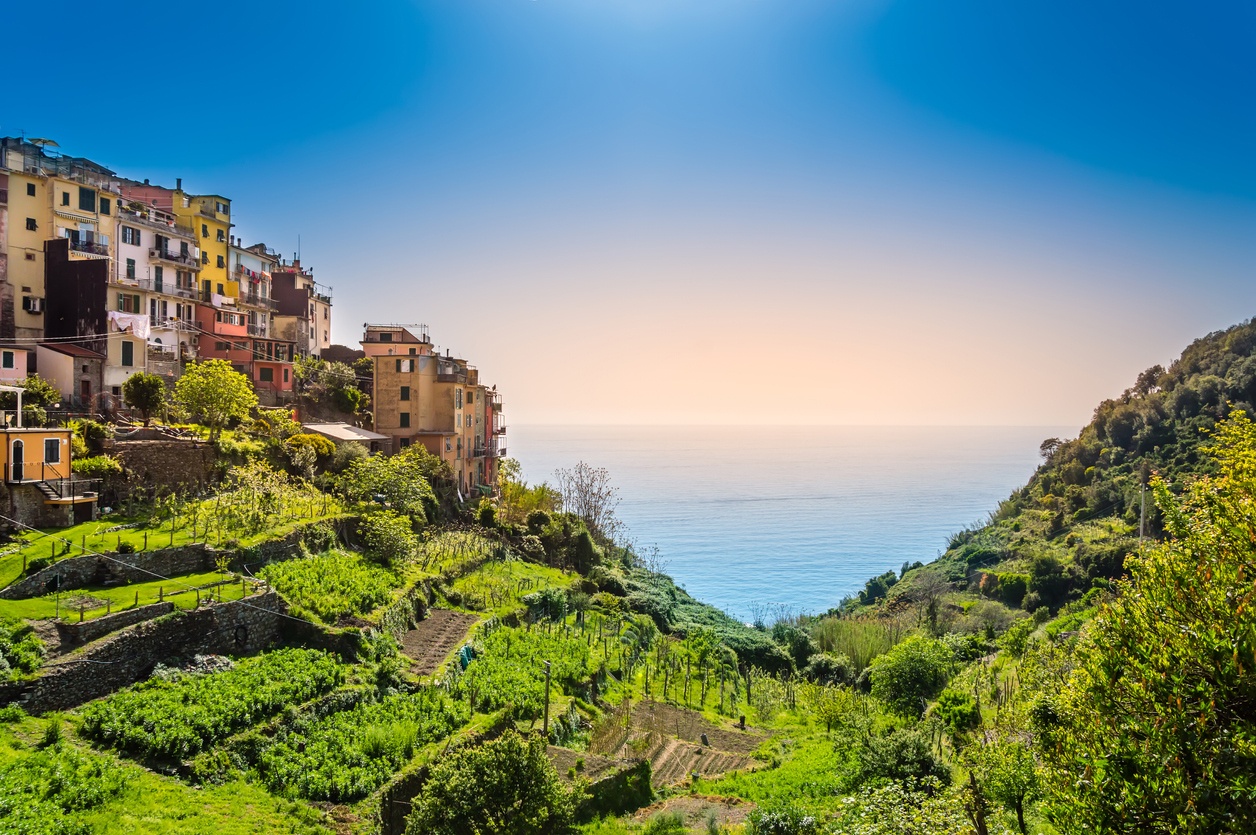
National Park of Cinque Terre (Italy)
The Cinque Terre National Park is a national park in Italy, which extends along a stretch of the Ligurian coast, where five picturesque villages are located: Monterosso al Mare, Vernazza, Corniglia, Manarola and Riomaggiore. The park was created in 1999 to protect this natural and cultural heritage, which was declared a UNESCO World Heritage Site in 1997. The park offers many possibilities for visitors, such as walking the trails that connect the villages with each other or with the hinterland, enjoying the beaches and coves, admiring the vineyards and olive groves on the terraces, tasting the local gastronomy and wines or practicing water activities such as scuba diving or kayaking. The Cinque Terre National Park is a unique and enchanting place, which preserves the essence and tradition of rural and seafaring life on the Italian coast.
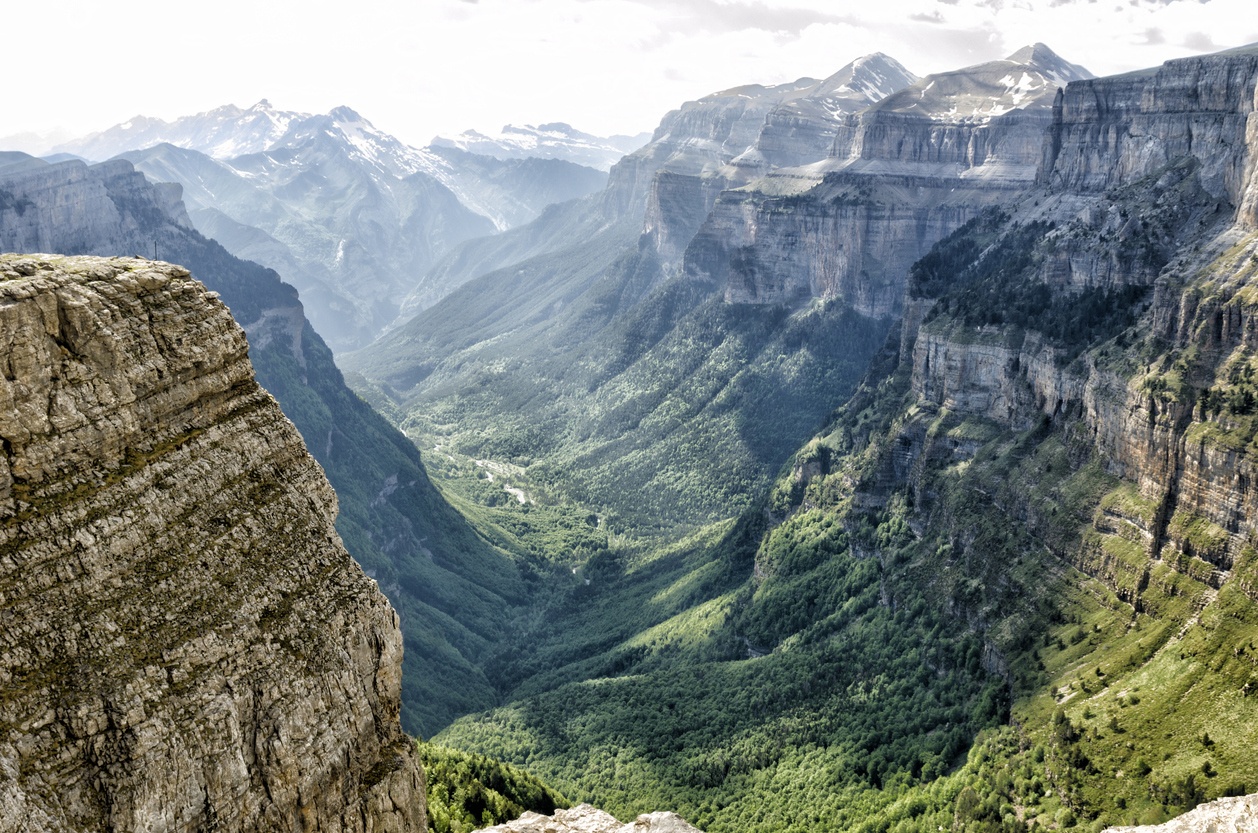
Ordesa y Monte Perdido National Park (Spain)
The Ordesa y Monte Perdido National Park is a national park in Spain, located in the Huesca Pyrenees, in the province of Huesca, Aragon. The park was created in 1918 under the name of Valle de Ordesa, being the second oldest in the peninsula. The park covers an area of 15,608 hectares, with the Monte Perdido massif (3,355 m), the highest in Europe formed by limestone, and the four surrounding valleys: Ordesa, Pineta, Añisclo and Escuaín. The park is home to a great diversity of ecosystems, from the forests and meadows of the valleys to the arid areas and glaciers of the peaks. It also has a rich fauna and flora, with endemic and endangered species such as the bearded vulture, the sarrio or the Ordesa violet. The park is an ideal destination for lovers of hiking, climbing, skiing or photography, among other activities. It also has a great cultural and historical value, with numerous archaeological, artistic and ethnographic remains. The park is recognized as a UNESCO World Heritage Site, a Biosphere Reserve and a Special Protection Area for Birds.
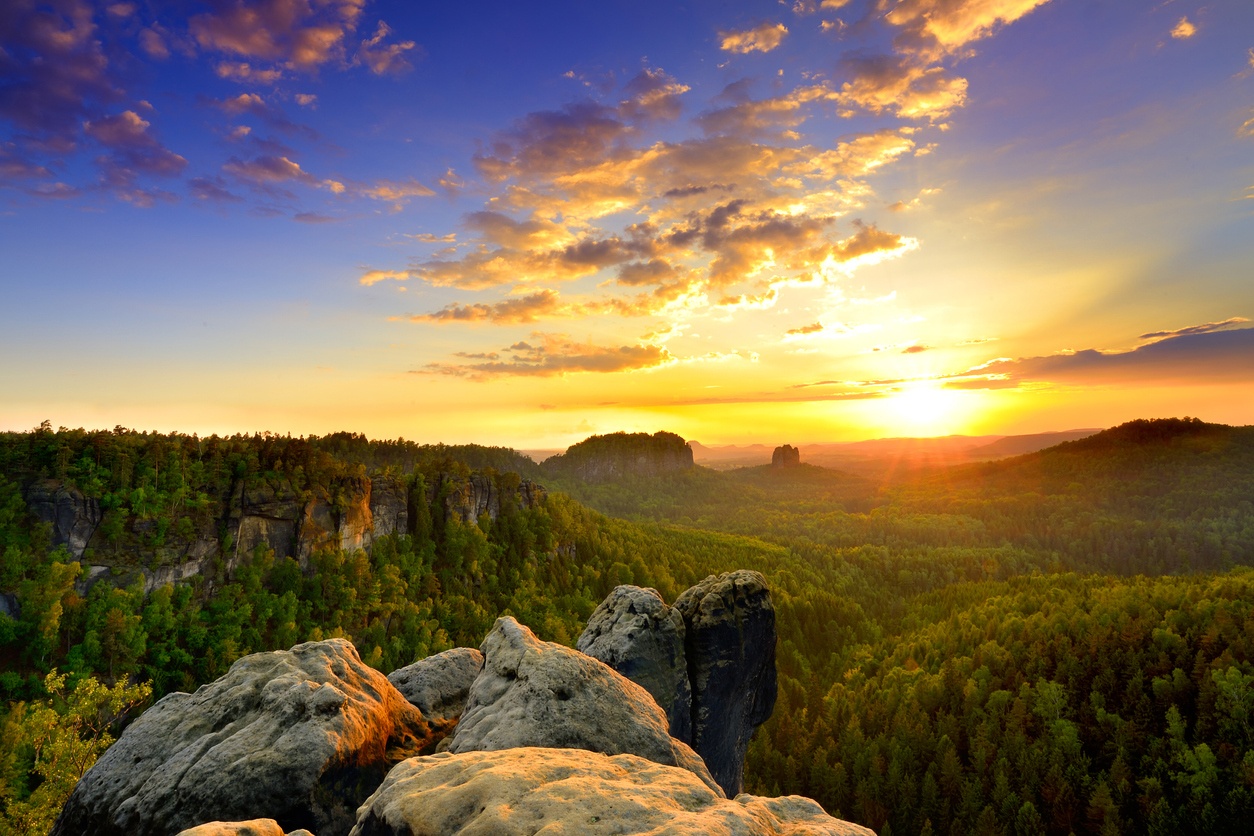
Saxon Switzerland National Park (Germany)
The Saxon Switzerland National Park is a national park in Germany, located in the state of Saxony, near the city of Dresden. The park was created in 1990 and covers an area of 93.5 km², within the mountainous region of the Elbe Sandstone Mountains. The park is characterized by its impressive rock formations, which are the result of water and wind erosion on limestone rock. Some of the most famous are the Bastei Bridge, a spectacular natural footbridge over a chasm, or the Schrammsteine, steep peaks that challenge climbers. The park is also home to a wide variety of ecosystems, from mixed forests to alpine meadows, where species such as the golden eagle, lynx and forest buzzard bats live. The park is an ideal destination for lovers of hiking, climbing, cycling or photography, among other activities. It also has great cultural and historical value, with numerous castles, monasteries and picturesque villages in the surrounding area.
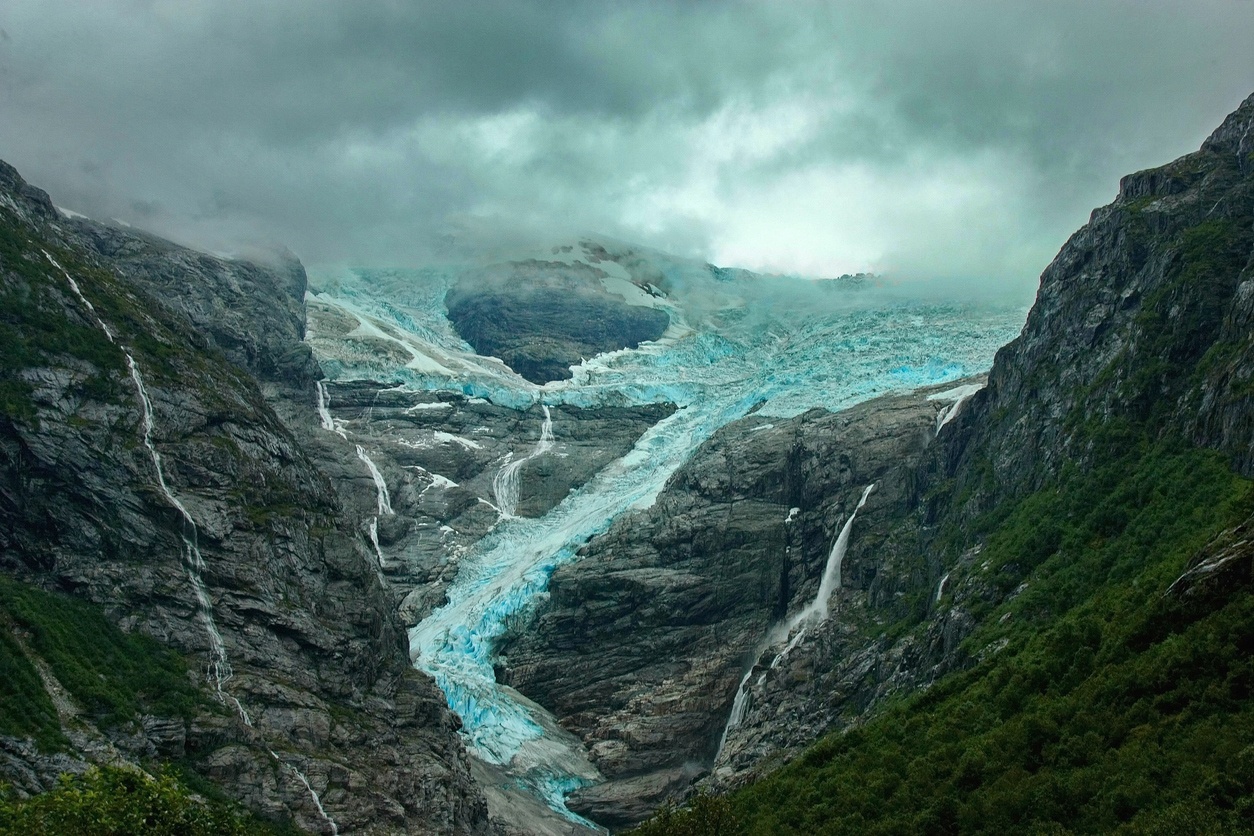
Jostedalsbreen National Park (Norway)
Jostedalsbreen National Park is a national park in Norway that encompasses the largest glacier on the European continent, the so-called Jostedalsbreen or Jostedal Glacier. The park was founded in 1993 and covers an area of 1,310 km², making it the fourth largest park in the country. The park is characterized by its glacial landscapes, where ice and snow have shaped the mountains and valleys, creating geological formations such as moraines, fjords or stone towers. The park is also home to a great diversity of flora and fauna, with species such as reindeer, lemmings, wolves and brown bears. The park is an ideal destination for nature lovers, hiking, climbing or skiing, among other activities. It also has great cultural and historical value, with numerous museums and visitor centers in the area.
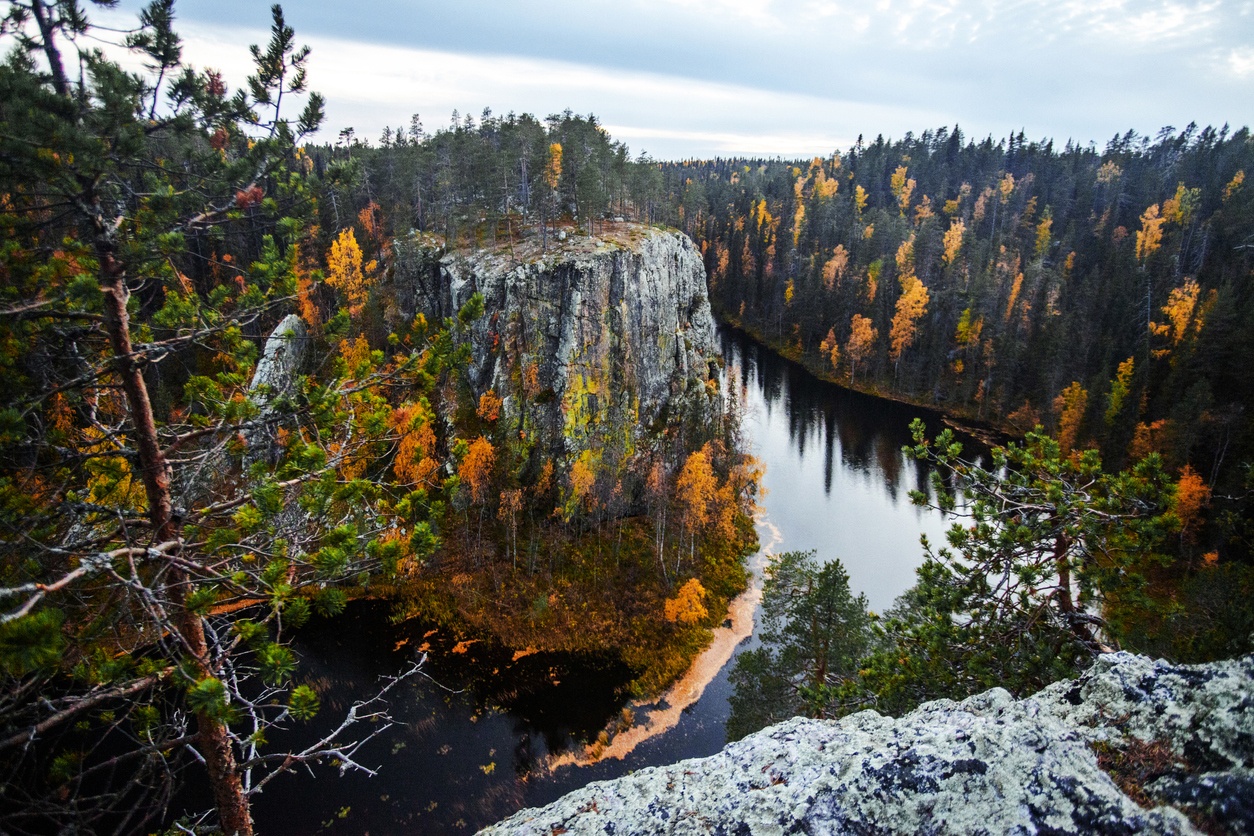
Oulanka National Park (Finland)
Oulanka National Park is a national park in Finland located in the regions of Northern Ostrobothnia and Lapland, near the border with Russia. The park was founded in 1956 and covers an area of 270 km², making it the fourth largest park in the country. The park is characterized by its fluvial landscapes, where water has shaped the mountains and valleys, creating geological formations such as canyons, rapids or sandbanks. The park is also home to a great diversity of flora and fauna, with species such as reindeer, lemmings, wolves and brown bears. The park is an ideal destination for nature lovers, hiking, climbing, cycling or skiing, among other activities. It also has great cultural and historical value, with numerous museums and visitor centers in the area.
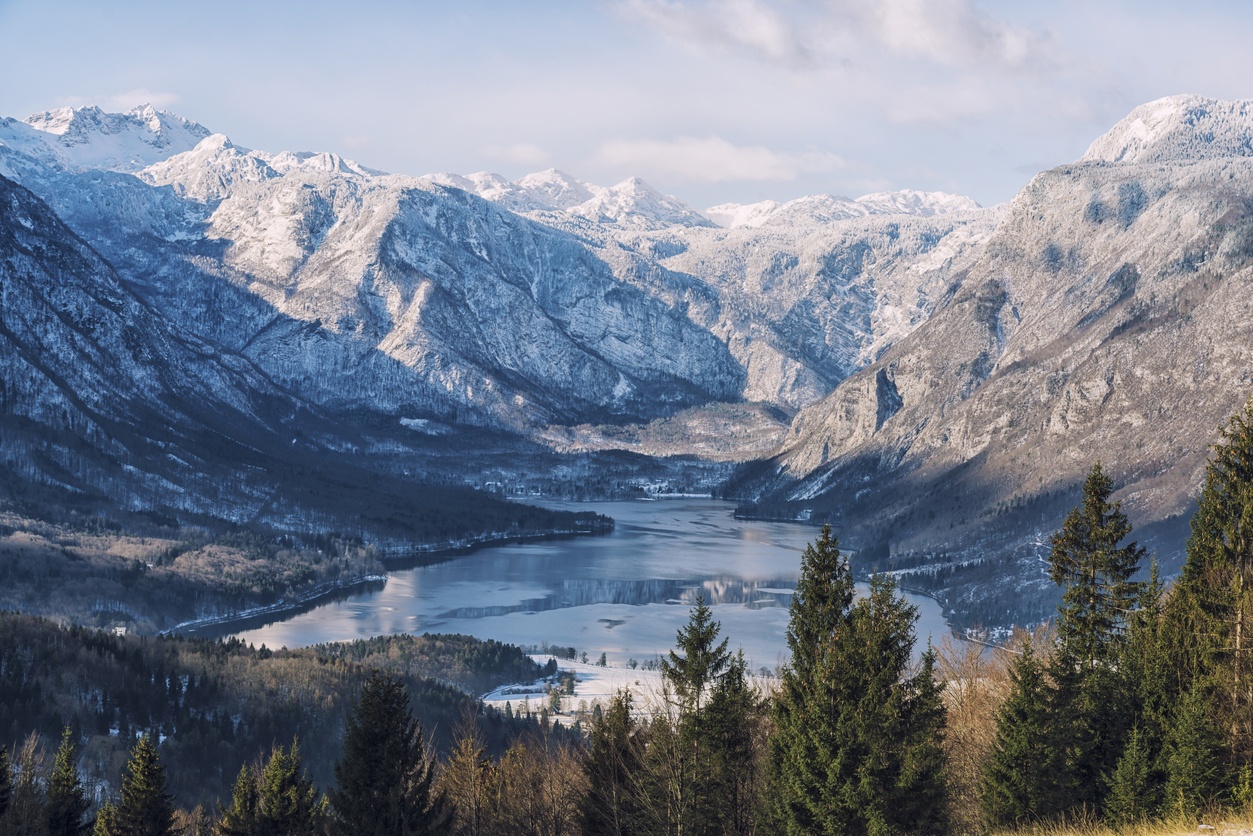
Triglav National Park (Slovenia)
Triglav National Park is the only national park in Slovenia and one of the oldest in Europe. It is named after Mount Triglav, the highest mountain in the country and a national symbol. The park extends over 838 km² in the eastern Julian Alps, near the Italian and Austrian borders. The park is characterized by its alpine landscapes, where glacial valleys, lakes, rivers, waterfalls and forests alternate. The park is home to a great diversity of flora and fauna, with endemic and endangered species such as the golden eagle, the brown bear or the Triglav flower. The park is an ideal destination for nature lovers, hiking, climbing, cycling or skiing, among other activities. It also has great cultural and historical value, with numerous museums and visitor centers in the area.
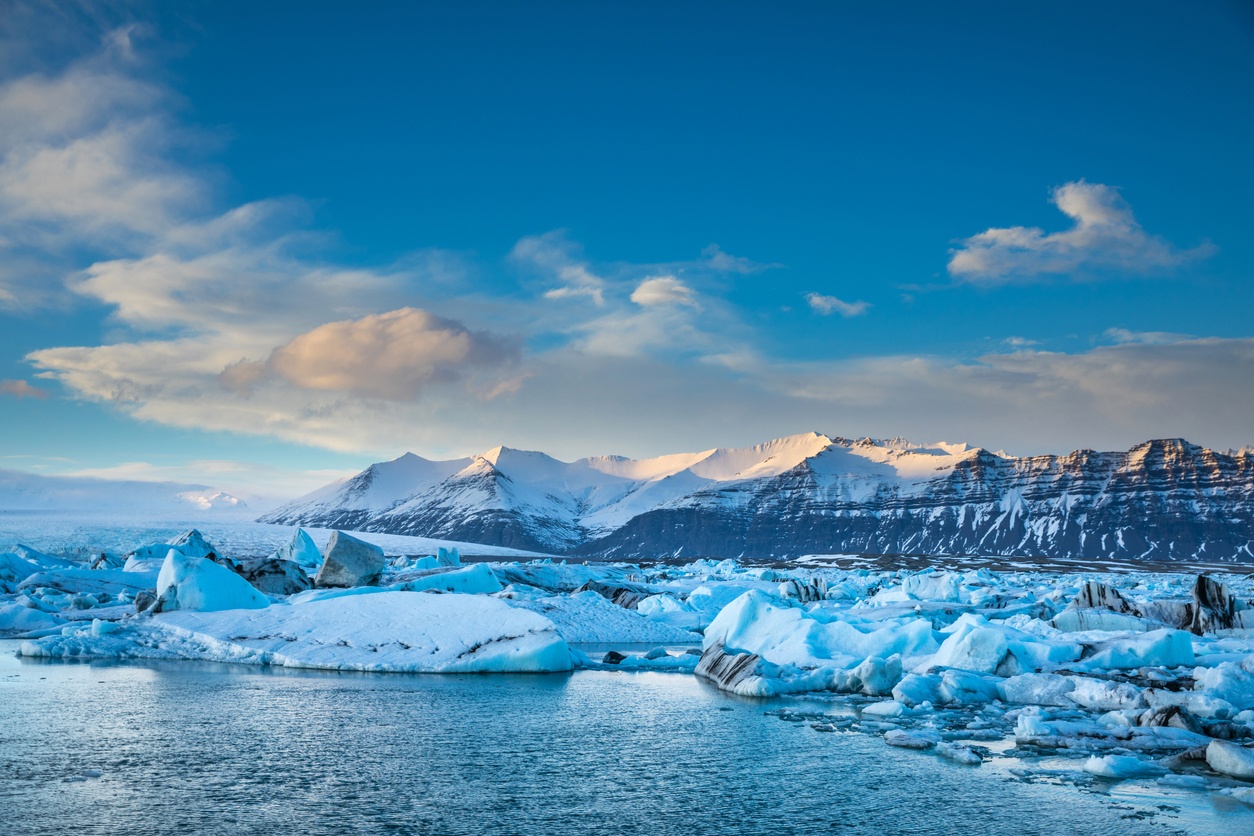
Vatnajökull National Park (Iceland)
Vatnajökull National Park is the only national park in Iceland and the largest in Europe, with 14,967 km². It is named after the Vatnajökull glacier, the largest in Europe outside the Arctic, which covers 8% of the island’s surface. The park was created in 2008 and encompasses the entire glacier and its surroundings, including previous national parks such as Skaftafell and Jökulsárgljúfur. The park is characterized by its glacial and volcanic landscapes, where you can admire formations such as canyons, lakes, waterfalls and fissures. The park is home to a great diversity of flora and fauna, with species adapted to the cold and snow, such as the arctic fox, the reindeer or the snow flower. The park is an ideal destination for nature lovers, hiking, climbing, skiing or diving, among other activities. It also has great cultural and historical value, with numerous archeological and folkloric remains in the area.
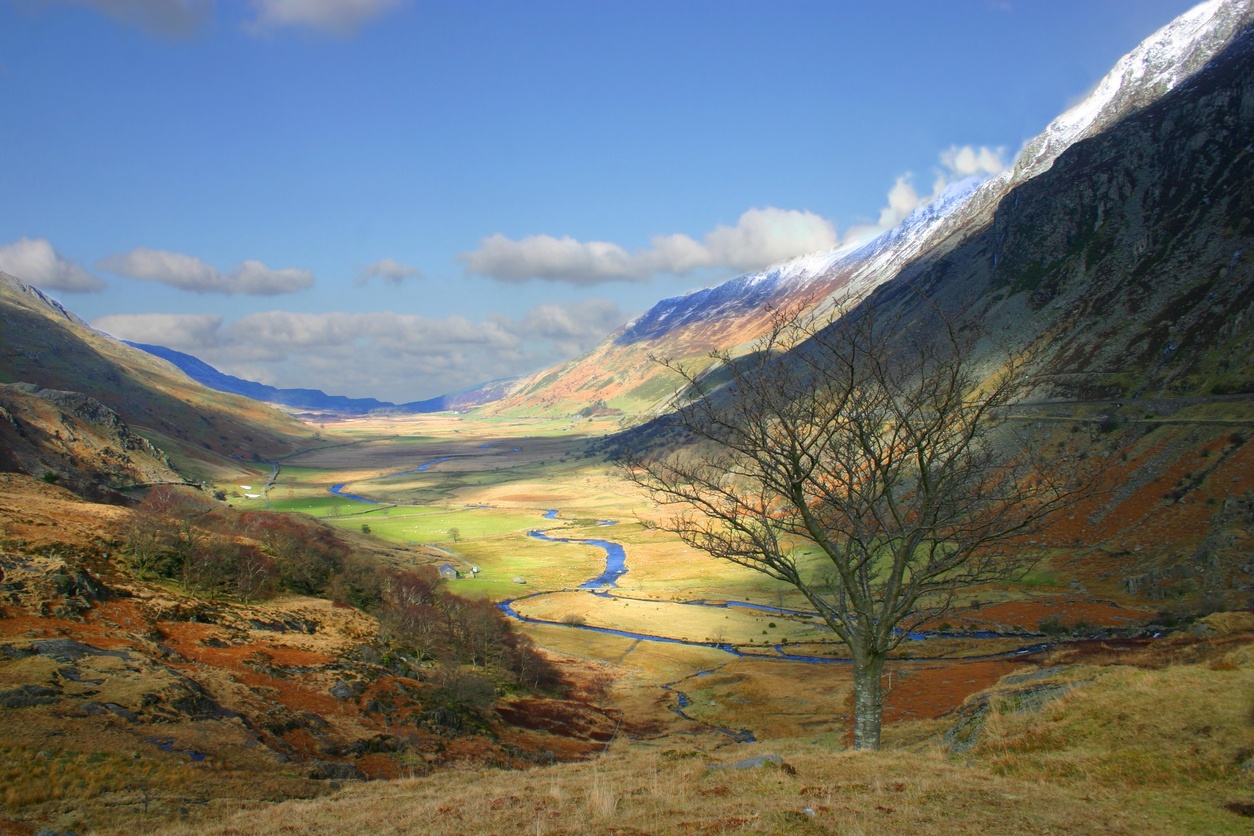
Snowdonia National Park (United Kingdom)
Snowdonia National Park is one of the three national parks in Wales and the third oldest in England and Wales, created in 1951. It covers an area of 2,142 km² in the region of Snowdonia, northwest Wales. It is named after Mount Snowdon, the highest mountain in Wales and a national symbol, with an altitude of 1,085 meters. The park is characterized by its mountainous landscapes, where peaks, lakes, rivers, waterfalls and forests alternate. The park is home to a great diversity of flora and fauna, with species such as the golden eagle, the red fox or the Snowdon flower. The park is an ideal destination for nature lovers, hiking, climbing, cycling or diving, among other activities. It also has great cultural and historical value, with numerous archeological and folkloric remains in the area.
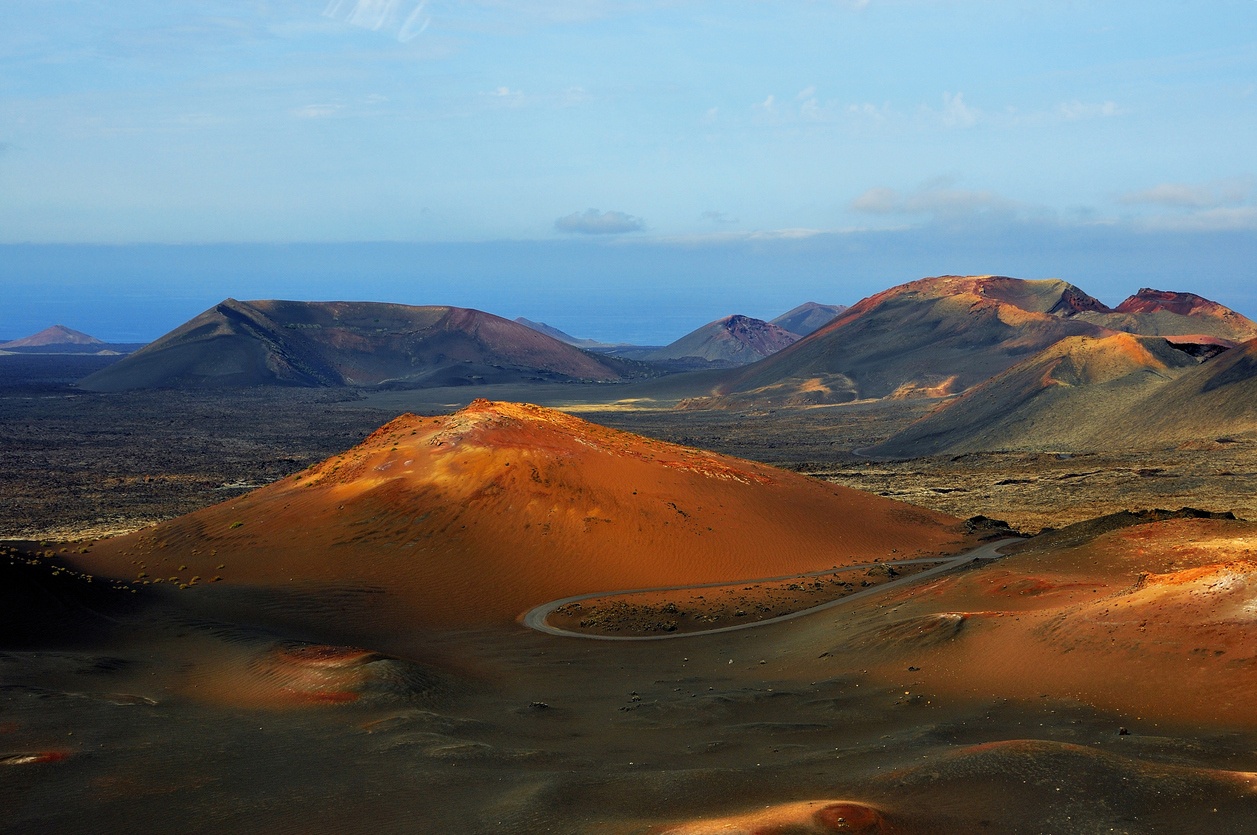
Timanfaya National Park, Canary Islands (Spain)
Timanfaya National Park is a Spanish protected natural area located in the municipalities of Yaiza and Tinajo, on the island of Lanzarote, Canary Islands. It was declared a national park in 1974 and covers an area of 51.07 km², being the only eminently geological national park of the Spanish National Parks Network. The park is characterized by its volcanic origin, the result of eruptions that occurred between 1730 and 1736, and in 1824, which buried nine villages and transformed the landscape of the island. The park is home to more than 25 volcanoes, some of them emblematic, such as the Fire Mountains or Timanfaya Mountain, and has hot spots on the surface that reach 100-120 ºC. The park offers various activities for visitors, such as bus or camel tours through the volcanic areas, geothermal demonstrations or visits to the interpretation center and the El Diablo restaurant, where people cook with the heat of the volcano.






